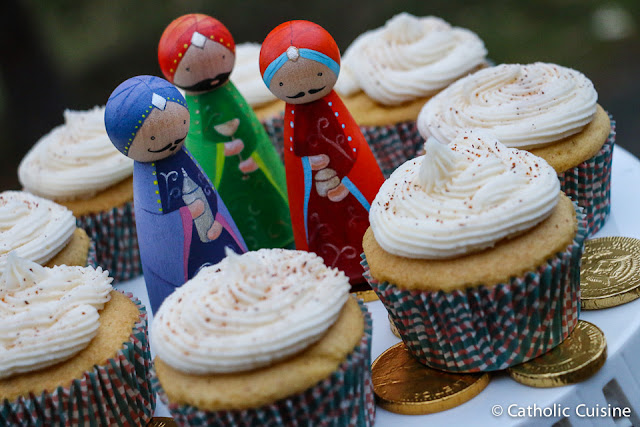The maple leaf is the characteristic leaf of the maple tree, and is the most widely recognized national symbol of Canada. Aaahhh, the taste of maple. Is there anything better or more Canadian? I always loved these melt-in-your-mouth candies made from maple syrup, but had never tried to make my own. Following this recipe from Epicurious as a guide for the candy making process, I gave it a try for the feast of Canada's St. Andre Bessette today.
St. Andre was a Brother of the Congregation of the Holy Cross and as the doorkeeper at Notre Dame College in Montreal, St. Andre humbly devoted his life to prayer, serving the Lord and comforting the sick and afflicted. His responsibilities were to answer the door, to welcome guests, find the people they were visiting, wake up those in the school, and deliver mail. Brother Andre joked later, "At the end of my novitiate, my superiors showed me the door, and I stayed there for forty years."
St. Andre is commemorated in most of the world by an optional memorial on January 6. His memorial is celebrated in Canada on January 7. I know it is too late for most to probably make these for today, but since tomorrow is his Canadian feast might be an option. But, next week St. Marguerite Bourgeoys optional memorial is January 12. St. Marguerite founded the Congregation of Notre-Dame de Montreal, and was also instrumental along with her teaching nuns, in helping to establish the Canadian city of Montreal.
Candy cold shape/symbol considerations:
- A cross since St. Andre was a brother with the Congregation of Holy Cross.
- The cross is also good for St. Marguerite as depictions show her wearing a large cross as part of her habit.
- He also had a great devotion to St. Joseph so any symbols associated with St. Joseph could work, too for St. Andre.
- Also a door since St. Andre was called "God's Doorkeeper."
- Maple leaf molds are the traditional one for these candies and since we are talking about Canadian saints that works well.
2 cups pure light-grade maple syrup, (Grade A Golden Delicate)
A few drops of vegetable oil or butter
Directions:
Set some candy molds into a jelly-roll pan. Set aside. [I used this cross on oval candy mold from CK Products.]
Pour the syrup into a large pot. Add a few drops of oil. (Boiling maple syrup will foam up; the oil keeps the foam down. Buttering the rim of the pot also helps.)
Boil carefully over high heat, without stirring, until the temperature of the boiling syrup is 28°F/17°C above the boiling point of your water (212°F/100°C at sea level). [Since water boils at different temperatures in different elevations, if you don’t know your exact boiling point do this step before boiling syrup - To determine boiling point of water in your location fill a pot partially with water. Bring to a boil, and note the temperature of the boiling water with a candy thermometer. ]
Remove from the heat and let cool for 3 to 5 minutes. Do not stir or disturb the candy at this point; if the thermometer is attached to the pan, leave it there during the cooling period.
Stir evenly until the liquid loses its gloss, starts to become opaque, and begins to thicken. (This is the tricky part; if you stir too long the thickened syrup will “set up,” or harden, in the pan. If this happens, add a cup of water, and reheat slowly to dissolve the sugar, then start over. But if you don’t stir long enough, the sugar may not “set up” in the molds at all.) [I had to do mine a second time to get the timing right since it did start to set up in the pan for me the first time – practice…]
Carefully spoon/pour the candy into the molds. It’s helpful to have an assistant spread the syrup in the molds while you continue to pour the mixture into the other molds. Allow the candies to cool, remove from the molds, place on a rack to dry for a few hours, and enjoy.
St. Andre Bessette and St. Marguerite Bourgeoys, Pray for us.
Pin It







